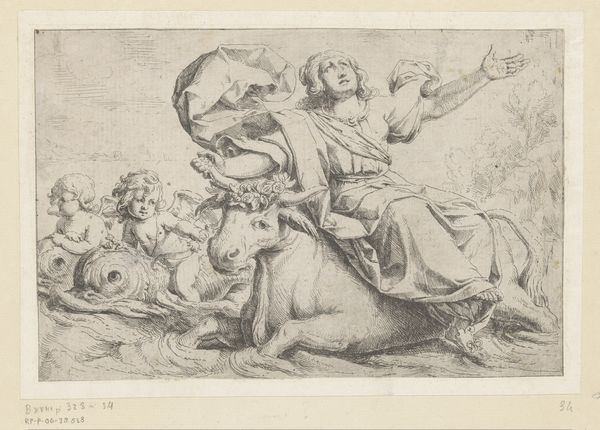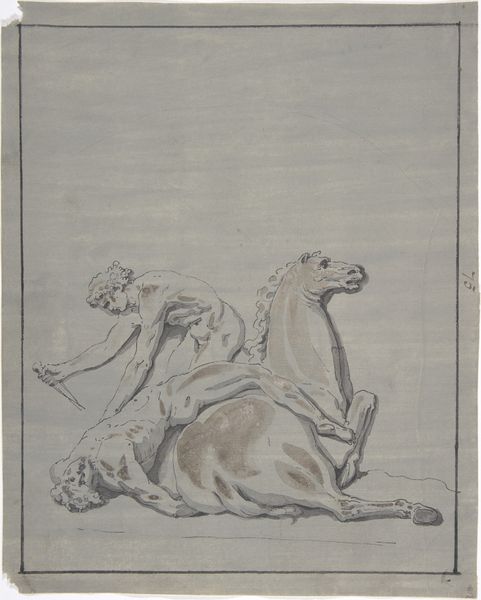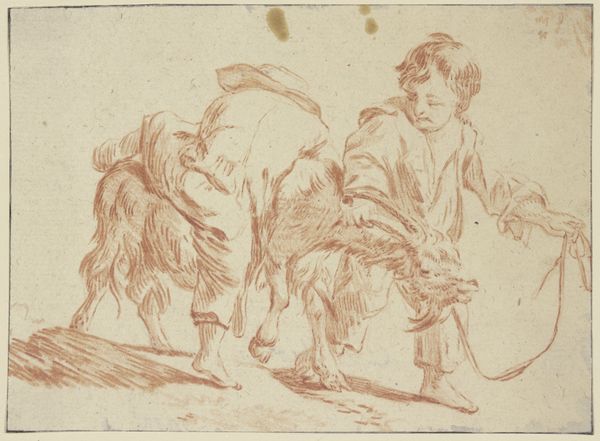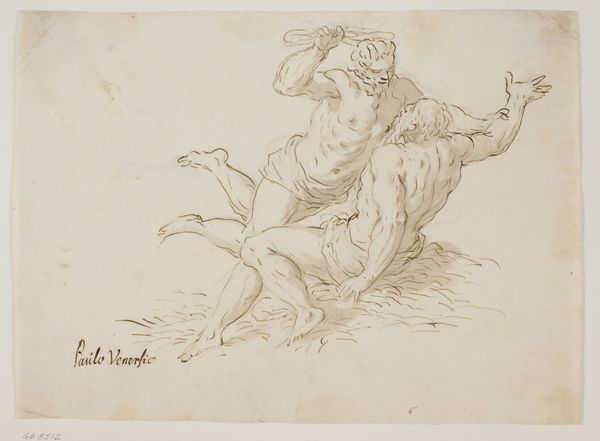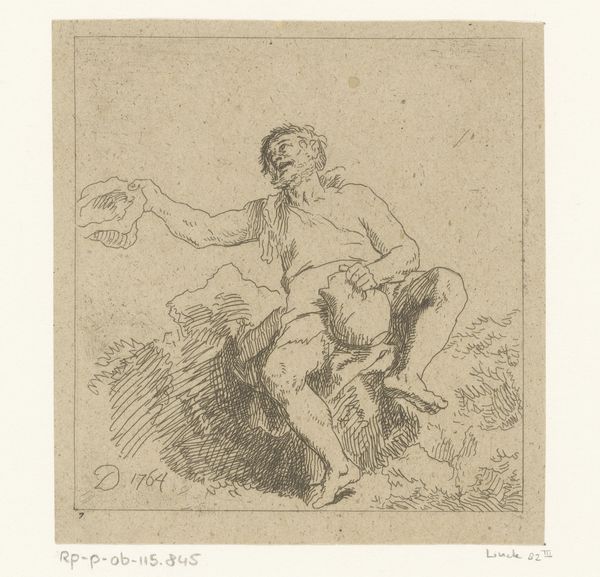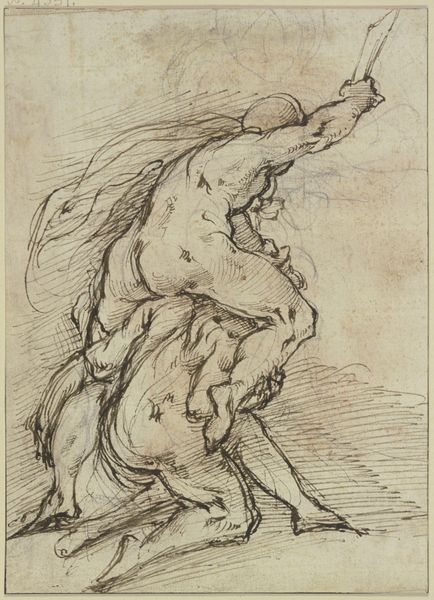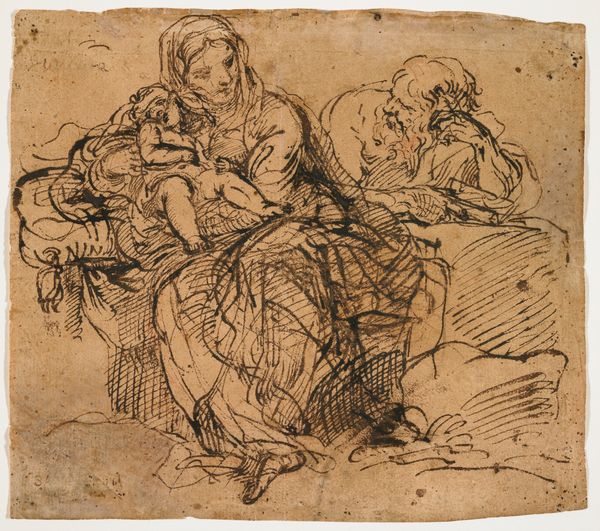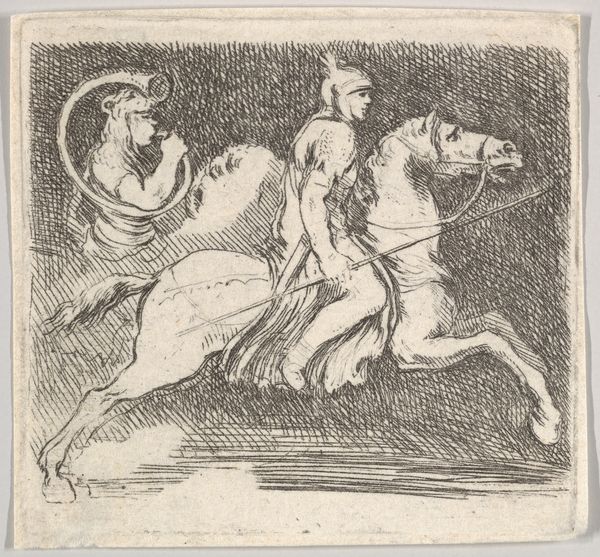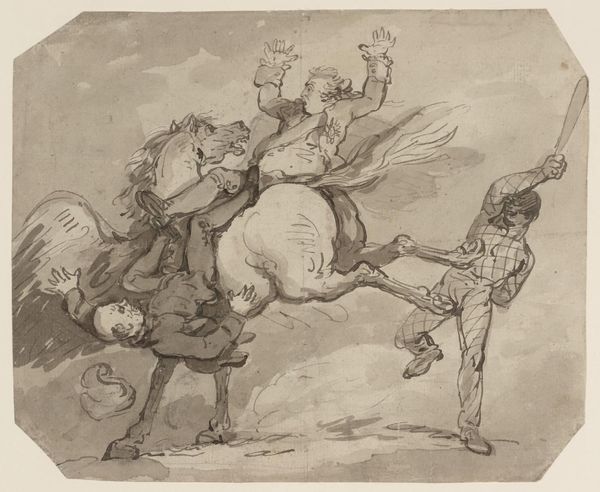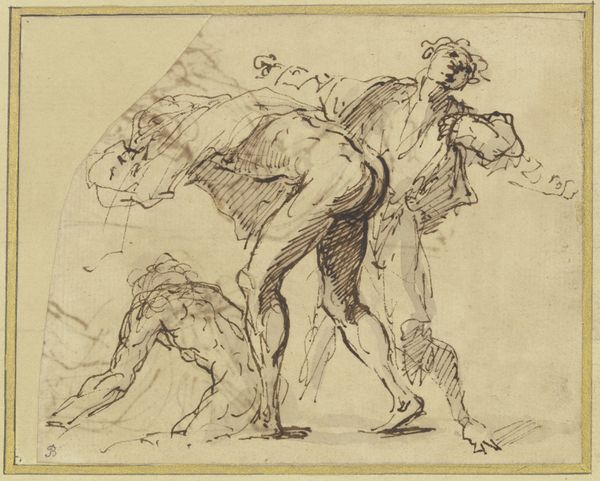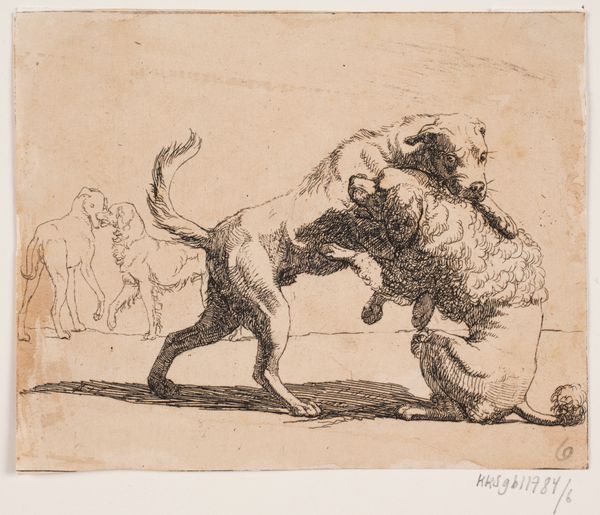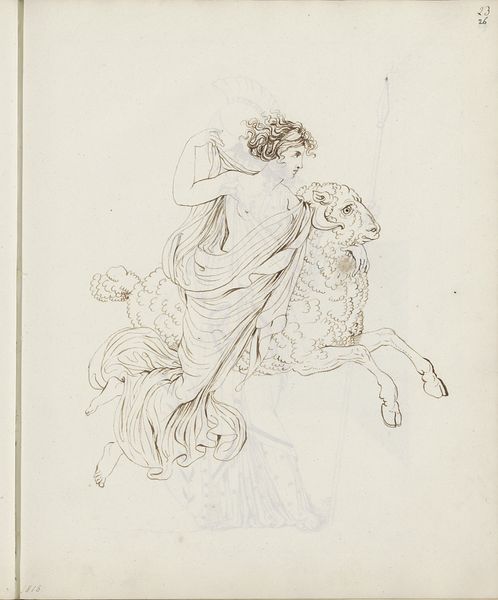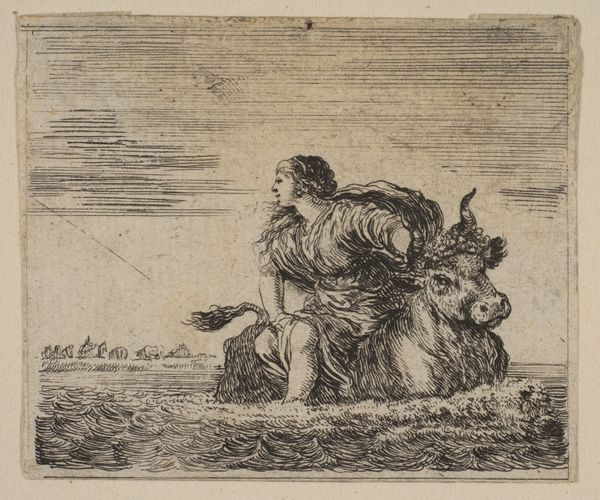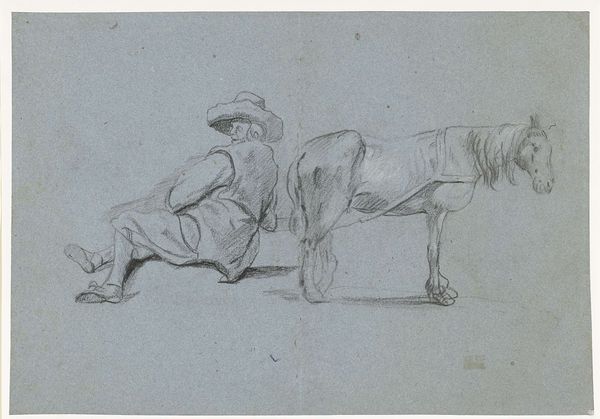
Scene af Apulejus' "Det gyldne æsel" 10.bog. Den fornemme dame opmuntrer æslet 1808 - 1809
0:00
0:00
drawing, paper, ink
#
drawing
#
neoclacissism
#
narrative-art
#
figuration
#
paper
#
ink
Dimensions: 194 mm (height) x 257 mm (width) (bladmaal)
Editor: Here we have Nicolai Abildgaard's "Scene af Apulejus' 'Det gyldne æsel' 10.bog. Den fornemme dame opmuntrer æslet," created between 1808 and 1809. It's an ink drawing on paper. The scene feels so dynamic, almost theatrical. I'm curious, what do you see when you look at the structure of this piece? Curator: The lines are quite deliberate. Notice how Abildgaard uses line weight to create depth, even though the color palette is restricted. It's an interesting dance between representation and the abstract quality inherent to drawing itself. Have you observed how the draping of the clothing emphasizes the form beneath it? Editor: Yes! The fabric folds seem to cling and accentuate the body's posture. It makes me think of classical sculpture. Curator: Precisely. There's a deliberate echoing of classical sculpture here. He also used layering to generate transparency; where do you see use of that technique? Editor: That's evident in how the donkey appears—it seems as if some part of it is about to dissolve! Its positioning adds an interesting element. What is the role of its legs to your eye? Curator: The legs create movement. Note how Abildgaard contrasts the more solid front legs with the ghostly, implied legs towards the rear. This contrast serves to highlight the dynamic tension within the composition, wouldn’t you agree? Editor: Absolutely. It creates an energy, despite the limited palette. It is exciting. I never would have analyzed the weight of the lines independently. It makes the image's structure stronger than I would have thought! Curator: It’s by deconstructing the artwork into its basic structural elements that one may appreciate the artist's full genius and intended narrative.
Comments
No comments
Be the first to comment and join the conversation on the ultimate creative platform.
